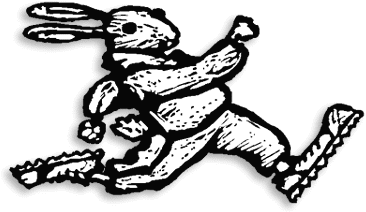|
|
|


|

|
Who's the debt
collector
at your shop?
It's a job that
no one really wants to do. But it helps to know who
is best suited to be the debt collector. Debt collectors
are pragmatic, persuasive, persistent, and even tempered.
Obviously, not everyone is suited to this demanding
task. You need to have a debt collecting hierarchy
and policy. The big guns won't have to be called in
unless early attempts at collection are ignored. The
first step should begin with an AE, and is not a collection
call at all!
 AEs follow
up with clients shortly after Invoices
are sent. Ask if an invoice was received,
if everything seems in order, and if
there are questions. This call sets
the tone for collecting money ASAP.
It lets clients know you're concerned
that they understand what they're being
billed for and that there is an outstanding
invoice you're interested in receiving
payment for. The true collections part
begins gently, and assumes an invoice
has simply been overlooked or lost
after an AE's call. So follow up with
the: AEs follow
up with clients shortly after Invoices
are sent. Ask if an invoice was received,
if everything seems in order, and if
there are questions. This call sets
the tone for collecting money ASAP.
It lets clients know you're concerned
that they understand what they're being
billed for and that there is an outstanding
invoice you're interested in receiving
payment for. The true collections part
begins gently, and assumes an invoice
has simply been overlooked or lost
after an AE's call. So follow up with
the:
 Accounting
department sending statements
if invoices aren't paid within
your terms. Statements recap
what's outstanding, and also
include an aging which shows
aging period balances. Your
accounting department can call
a client's accounting department
for an even stronger stance.
Statements and phone calls
give clients a chance to save
face before: Accounting
department sending statements
if invoices aren't paid within
your terms. Statements recap
what's outstanding, and also
include an aging which shows
aging period balances. Your
accounting department can call
a client's accounting department
for an even stronger stance.
Statements and phone calls
give clients a chance to save
face before:
 Collection
calls are made by a controller,
office manager, or owner.
Once the debt collector is
chosen, the accounting department
regularly notifies this person
if an account goes into arrears.
Calls to clients need to secure
either payment information
or reasons why payment is not
imminent. If needed, a payment
plan is worked out with a client.
Based on your policy, work
in progress for a client may
be put on hold. Last, a decision
needs to be made regarding
your future relationship with
a delinquent client. Collection
calls are made by a controller,
office manager, or owner.
Once the debt collector is
chosen, the accounting department
regularly notifies this person
if an account goes into arrears.
Calls to clients need to secure
either payment information
or reasons why payment is not
imminent. If needed, a payment
plan is worked out with a client.
Based on your policy, work
in progress for a client may
be put on hold. Last, a decision
needs to be made regarding
your future relationship with
a delinquent client. |
|
By Mindy
WIlliams
Getting paid faster is the result of taking the right steps at your shop
and getting clients to do the same. Here's how:
TIP #1: Bill faster. (This one is completely in your hands!)
For tips on speeding up the billing process, see our newsletter
on Faster
Billing.
TIP #2: Address the invoice to the person who
approves the checks, not just the company in general.
Follow up with a courtesy call by the AE to that person
to ensure that the invoice was received and to see if
there are any questions.
TIP #3: Include return envelopes with return
postage affixed. There's nothing easier than just popping
a check into an envelope that's already addressed and
stamped. You're saving them time and money!
TIP #4: Fax or email invoices to clients. (Save
yourself the postage!) Take advantage of the technology
that gets invoices to your clients instantly. For instructions
on how to save an invoice (or any report in Clients & Profits)
as a PDF file, see the technote. |
|
TIP #5: Bill
retainers early to allow time for client processing and payment.
This decreases WIP turnaround on retainer work.
TIP #6: For very delinquent accounts, send a messenger
to pick up a check, authorize the client to use your
Fed Ex account, add late payment penalties, offer discount
on early payment, and require full payment or deposit
up front prior to beginning new work.
TIP #7: If early attempts at collection fail,
making collection calls regularly lets clients know
you are serious about getting paid. (See next column
to help you create a debt collecting process and determine
who's best suited to wear the debt collector hat at
your shop.)
Mindy
Williams is a senior member of
the Clients & Profits Helpdesk and co-edits the quarterly newsletters. |

|
|
|
|